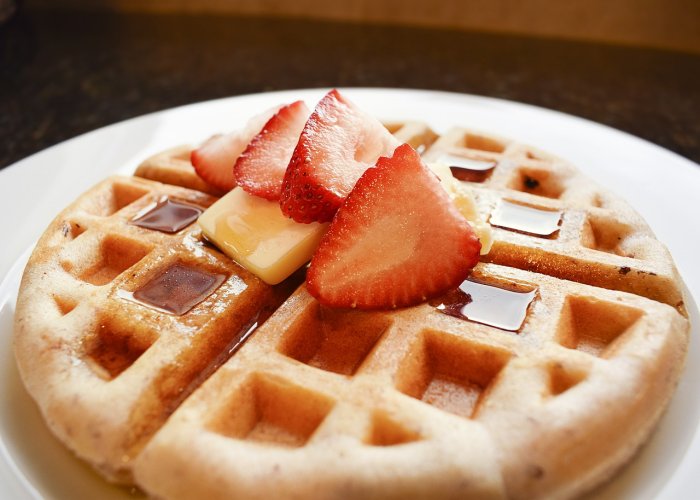Eddie Gonzales Jr. – MessageToEagle.com – The search for healthier food options combined with an increase in nutrition-related diseases has given rise to nutrition fads such as eating gluten-free, taking supplements and adopting restrictive diets.

This, in turn, has produced fad products that cater to certain eating trends—often endorsed by celebrities and social-media influencers.
Now, two University of Massachusetts Amherst resource economists have published new research in European Review of Agricultural Economics showing that the popularity of fad foods boosts the profits of manufacturers, even though the products often exploit false nutrition assumptions.
Christoph Bauner, assistant professor of resource economics, and Nathalie Lavoie, associate professor of resource economics, have developed a theoretical model that examines product-development and pricing decisions by food manufacturers when a health fad presents the potential to bring new products to market and how consumers are likely to respond.
“In our model, we can turn the fad on and off,” says Bauner. “We can compare when there is a fad, for example when people care about gluten-free products and when they don’t particularly care, and we can see how competition plays out in the marketplace.”
Bauner and Lavoie find that a fad product can create so much perceived differentiation compared to a conventional product that competition between the two products is significantly diminished—allowing manufacturers of both products to increase prices and profits at the expense of consumers. This can occur even if the fad product is based on false health assumptions and has inferior nutrition and taste.
“There’s no incentive for the conventional product’s manufacturer to say, ‘Hey, that fad product is not really good for you; it’s not doing anything for you’—because they benefit from having that product address a fad,” Lavoie explains, in a press release.
The research reinforces the advice that consumers should carefully consider what product suits their needs and resist “hopping on the fad bandwagon,” Bauner says.
For policymakers it’s more complicated. The study finds that in most cases, credible information such as government-mandated package labeling to dispel false assumptions about health benefits, is beneficial to consumers and can force the maker of the fad product to cut prices and increase quality.
However, in the case of certain fad products where the perception of health benefits is low and skepticism of the fad is high, it could be a lose-lose situation for consumers: a lower-quality fad product and a higher-priced conventional product.
The costs of eating gluten-free
The findings build on earlier research published by Bauner and Lavoie in 2022 that reveals gluten-free products cost significantly more than products that contain gluten, while the nutritional value is often inferior. The analysis of more than 1,500 gluten-free breads, cookies and pastries introduced in the U.S. between 2013 and 2022 represents the most comprehensive known comparison of gluten-free and gluten-containing products to date.
The study shows gluten-free products were up to 85% more expensive than their gluten-containing counterparts. It also exposes significant differences in nutritional value, though this varies by product category.
All gluten-free products contained more total fat than those containing gluten—as much as 113% more in the bread category. However, gluten-free breads overall also contained less sodium; gluten-free cookies contained more fiber; and gluten-free pastries contained less sugar and more fiber.
“Gluten-free products tend to be less healthy than regular ones,” Bauner says. “However, nutrition is not one dimensional. For every product category we looked at, we found at least one dimension where the gluten-free product was better nutritionally, and multiple dimensions where it was worse.”
While gluten-free products are prescribed for those with celiac disease, wheat allergy and non-celiac gluten sensitivity, for the rest of the population no benefit has been scientifically proven.
“It’s important for consumers when considering a gluten-free versus a conventional product to look at all of the characteristics and compare,” Lavoie says. “Total fat is higher in gluten-free bakery products, and so is the price. But, for the other nutritional characteristics, which product is better varies—consumers should pay close attention to what they are concerned about.”
Written by Eddie Gonzales Jr. – MessageToEagle.com Staff






